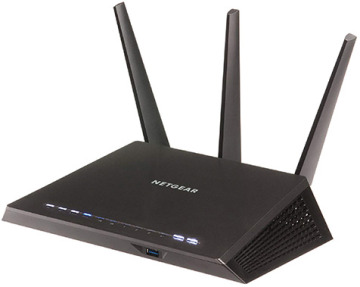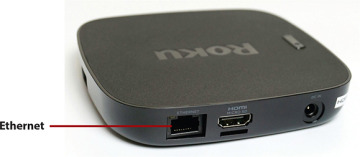- Understanding Internet Streaming Video
- Watching Amazon Fire TV
- Watching Apple TV
- Watching Google Chromecast
- Watching Roku
- Comparing Streaming Media Players
- Optimizing Streaming Media Playback
Optimizing Streaming Media Playback
Some people find that streaming video looks every bit as good as—and maybe even better than—what you get from cable or satellite. Other viewers are plagued by fuzzy or pixelated pictures, stuttering playback, or even problems loading individual channels or programs. What can you do to make sure you get the best possible playback from your streaming video services? Here are some tips.
Get a Fast (and Reliable) Internet Connection
Because streaming video streams over the Internet, you want as fast and reliable an Internet connection as possible. An inferior Internet connection results in all sorts of streaming playback problems—and might not even work at all.
Let’s look at the worst-case scenario. If, heaven forbid, you have a dial-up Internet connection (some people still do), you might as well not even try to do the streaming thing. A dial-up connection isn’t fast enough for the demands of video streaming. It just won’t work.
What you want is as fast a broadband connection as you can get and afford. Streaming video is very demanding and takes up a lot of bandwidth; the faster the connection, the more videos you can stream, more reliably.
A fast Internet connection is even more important if you have multiple people watching multiple streaming programs at the same time. Let’s say you’re watching a streaming show on your living room TV, your spouse is watching a different streaming program in the bedroom, and your kids or grandkids are watching streaming YouTube videos on their phones or tablets. All that data coming down your Internet connection at the same time can slow everything down unless you have a really fast (high-bandwidth) connection.
That means looking at the Internet packages offered by your Internet service provider (ISP) and choosing the one that best fits your viewing habits. You want to look at download (not necessarily upload) speeds, and the faster the better. A package that promises 200 megabytes per second (Mbps) is going to be considerably faster and more reliable than a 50 Mbps plan.
How fast do you need? To watch a single stream in standard definition, you need a 3 Mbps connection. To watch a single stream in HD, you need a 5 Mbps connection. And to watch a single stream in 4K Ultra HD, you need a 25 Mbps connection.
Multiply these numbers if you want to stream multiple programs simultaneously to multiple devices. For example, to watch two HD streams on two devices, you need a 10 Mbps connection (two times 5 Mbps). If you have three people in your house, all watching HD, then you need 15 Mbps. And so forth.
Most ISPs offer a variety of plans at different speed levels. For example, XFINITY in my area offers a Starter plan with 15 Mbps speed for $29.99 USD per month, a Plus plan at 60 Mbps for $39.99 USD per month, a Pro plan at 150 Mbps for $54.99 USD per month, and a Blast! Pro plan with 250 Mbps for $69.99 USD per month. Other ISPs offer speeds up to 1 gigabyte per second (Gbps)—that’s 1,000 Mbps!
Although the top plans may be overkill for casual viewing, you’ll probably find that the most basic plans aren’t fast enough. If you experience freezes and long load times and pixelated pictures, it might be time to upgrade your Internet plan. If you’re watching mostly HD programming and have two or three people in your home watching simultaneously, I recommend at least a 50 Mbps plan (especially given that you won’t always get 50 Mbps speeds).
By the way, while you’re figuring out what Internet package is best for your viewing habits, don’t forget to include the cost of that Internet service in your entertainment budget. You might save $100 or more by disconnecting your cable or satellite service, but remember you’re adding at least some of that back as part of a speedy Internet plan.
Get a Fast (and Powerful) Wi-Fi Router
Most people connect their streaming media players to the Internet wirelessly, via Wi-Fi. That means you need a decent Wi-Fi router in your home—one that can deliver blazing speed over the longest distance in your home.
Without getting too technical, you want a router that uses the latest Wi-Fi technology and a streaming player that matches. Many lower-priced routers and players use the standard labeled 802.11n, although the newer 802.11ac standard is faster and has a greater range, which you need if you have a large house. You should also look for routers and players that use multiple antennae and a technology called MIMO (stands for multiple input, multiple output); these enable more efficient transmitting of multiple streams. Routers that transmit in both the 2.4 GHz and 5 GHz bands (and streaming players that receive both bands) are also good; you can dedicate the faster 5 GHz band for video streaming and leave the lower 2.4 GHz band for regular household Internet.

Netgear’s Nighthawk R7000 router—dual-band, MIMO, 802.11a/b/g/n/dc Wi-Fi for superior video streaming. (Photo courtesy Netgear, www.netgear.com.)
A newer, faster, more expensive router not only has more bandwidth for your streaming video but it also should have a longer range. This is important if you have several streaming devices to feed and if some of them are quite distant from the router.
Move Your Router—or Your Streaming Player
For the best streaming performance, you need the strongest possible Wi-Fi signal. If your streaming player is on the opposite side of a large house from the Wi-Fi router, chances are the signal you receive might be too weak for reliable playback.
You can improve the strength of the wireless signal that your streaming player receives by moving either your streaming player or the wireless router.
If the signal you receive is very weak (check the network settings on your streaming player), try moving the player and the router closer together. That might mean moving the player (and the TV to which it’s connected) or moving the router. Sometimes a few feet closer makes all the difference in the world.
The solution might be for you to move the streaming player a little bit. Different objects—walls, doors, other electronic devices—can interfere with the Wi-Fi signal. Moving the streaming player (or the router) one direction or another, or even higher, may give you a clearer path for the signal.
For that matter, you might need to move anything else that’s in between the player and the router that could be interfering with the signal. If the router is in a closed office, open the door—or open the door to any bedroom where the streaming player is located. Move other electronics or wireless devices that are near the router—things like computer monitors, cordless phones, microwave ovens, and the like. You also might want to move your streaming player a little further from your TV—and if you’re using a streaming stick, connect an HDMI extender cable so that it doesn’t have to connect directly to the back of your television.
Connect via Ethernet for Best Playback
Wireless connections are convenient, but they’re not as fast or as reliable as a direct wired connection. If you want the best, most reliable picture from your streaming media player, connect to your router via Ethernet cable, not Wi-Fi, if that’s an option with your device. A wired Ethernet connection is rock solid, not prone to the connectivity issues you sometimes get with Wi-Fi.
The problem is that not every streaming media player has an Ethernet connection. Of the current generation of players, only the Amazon Fire TV Cube, Apple TV and Apple TV 4K, Google Chromecast Ultra, and Roku Ultra devices have Ethernet connections. Those are also the most expensive streaming media players, but if you want to connect via Ethernet, they’re the ones to look at.
Choose the Right Streaming Player for Each TV
If you want to stream content from different TVs in your home, you need some sort of streaming player connected to each set. You don’t have to use the same model or even brand of player on each TV, however; feel free to mix sticks and boxes as necessary.
In fact, it’s probably a good idea to choose different streaming players for different TVs and rooms. Although you might want to decide on a single infrastructure (Amazon or Apple or Google or Roku), just because you get used to using the same menus and options, you can choose appropriate devices from that manufacturer for each room’s specific needs. For example, you might want a Roku Ultra box in your living room so that you can connect via Ethernet, play back in 4K Ultra HD, and listen in Dolby Atmos. But a simple Roku Stick might be all your need on a smaller bedroom TV that has only HD resolution. You don’t have to buy the most expensive model for every TV you have.
Buy a TV with Fire TV or Roku Built In
For that matter, if you like Amazon Fire TV or Roku and also need a new TV, consider buying a smart TV that has Fire TV or Roku built-in. These so-called Fire TV Edition televisions and Roku TVs offer the exact same interface and functionality of the separate Fire TV and Roku devices, no separate player necessary. In many cases, a Fire TV Edition set or Roku TV ends up being a considerably lower price than a similar non-smart TV and separate Fire TV or Roku player. (And most Fire TV Edition sets and Roku TVs have Ethernet connectors on the back, so you can connect via faster wired connection if you want.)
Pick the Right Streaming Services for You
One mistake a lot of first-time streamers make is to spring for too many subscription-based streaming services. Yes, most everybody wants Netflix. You also might want standard Hulu, for watching recent TV shows. But do you really need Amazon Prime Video and CBS All Access and DC Universe and HBO Now? They each have their own monthly subscription fees, and those fees start to add up when you subscribe to multiple services. Yes, it’s tempting to subscribe to everything, but it’s unlikely there will be more than one or two shows on any given service to justify the monthly subscription cost. Check your viewing habits and subscribe only to those services you really watch—a lot.


